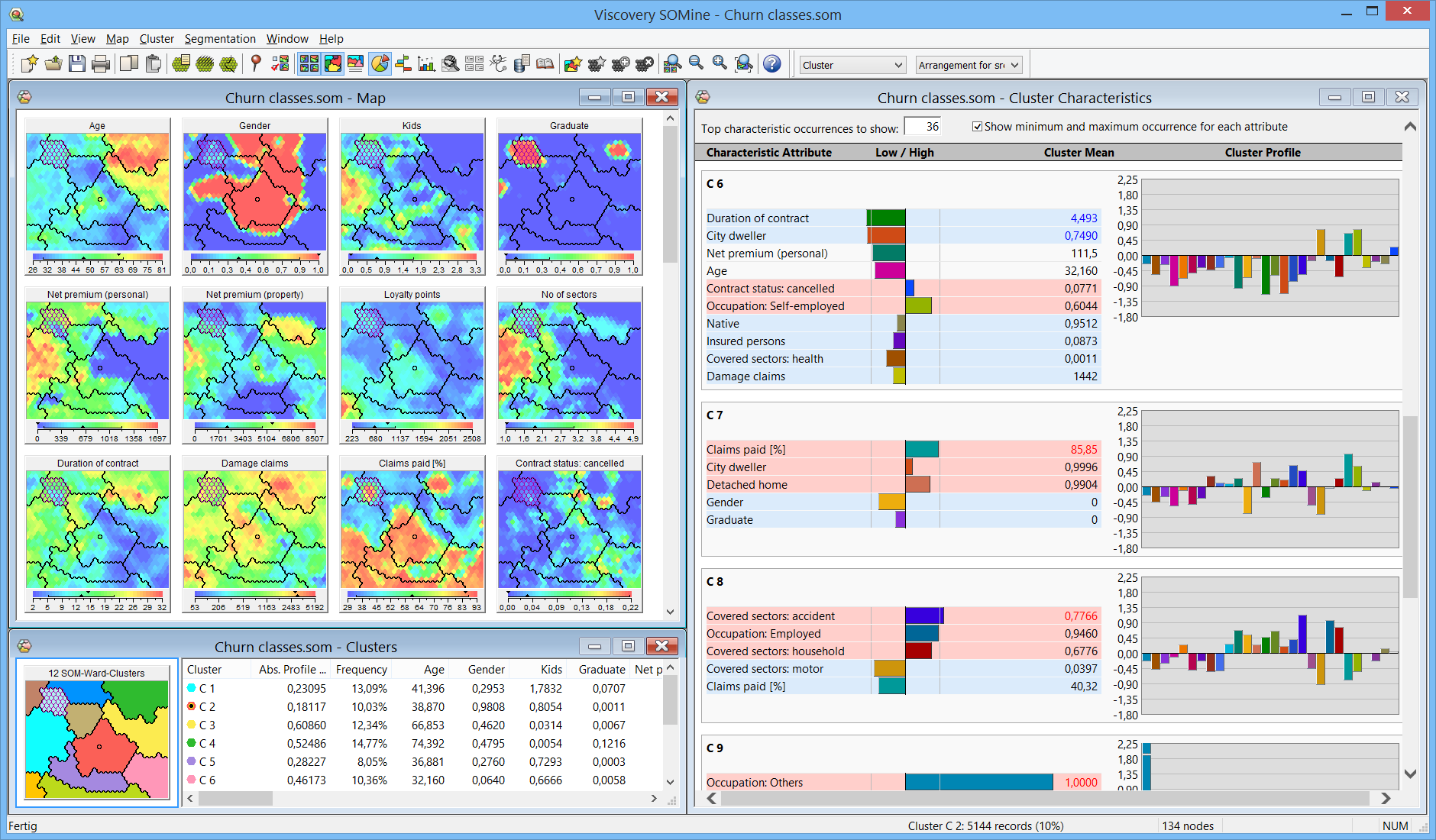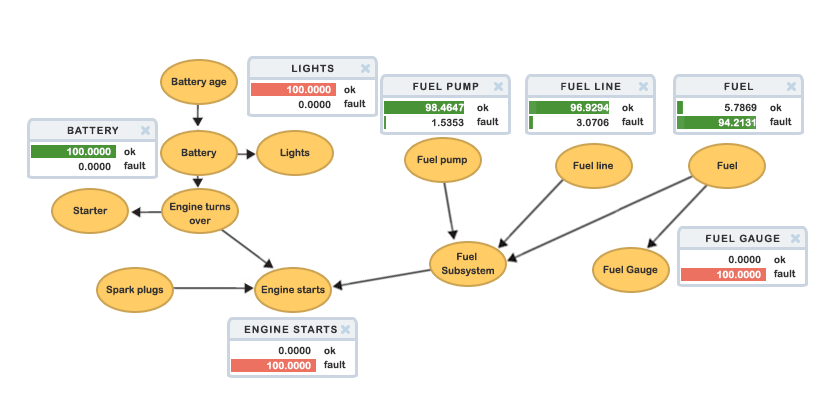We provide software licenses to use in our consulting programs based on Self-Organinzing Maps (SOM) and Bayesian Belief Network (BBN). These software boast the highest performance and quality in their respective fields.
Viscovery SOMine
In 1982, Prof. Kohonen of Helsinki University of Technology published the first learning algorithm for SOM, and a decade later, a batch learning variant of it. Originally, SOM was a study of associative memory models, and there was a path dependence in which the results obtained differed depending on the order of learning data, but batch learning showed the possibility of statistical application of SOM. Viscovery SOMine was started the development as a full-fledged data mining system based on SOM in 1994 came from on the results of that research, and in 1997 the basic technology was almost completed. In order to use SOM for data mining, it is necessary to implement various functions in the software, such as data preprocessing, scaling, map visualization, and various statistical analyzes on the map, as well as the core SOM learning algorithm. The software that is widely used in data science projects in the world does not have such a high degree of implementation for SOMs, as it is built with a comprehensive framework that allows the use of various machine learning algorithms. As far as SOM is concerned, Viscovery SOMine is the only one in the world and the best. Version 8 includes a state-of-the-art probabilistic SOM, which can compute membership probabilities for each class of data records. It’s a different approach than Latent Class Analysis, but it’s more flexible and versatile than it. <read more>

Hugin
Early work on Bayesian Belief Network (BBN) raised the so-called rumor problem that probabilities, when propagated through the network, could cause value discrepancies depending on their paths. A research team at Aalborg university in Denmark has developed an inference method to solve this: Junction Tree. Hugin is the Hugin Expert A/S software product commercialized as a result of this research. The company is owned by Danish nation. It is no exaggeration to say that BBN were first put to practical use with the advent of Hugin, and thus Hugin is a pioneer of BBN. A BBN can be created first based on the user’s knowledge of the target domain, as well as based on data. The former can be viewed as a kind of thought support tool. The latter is a data science project. The biggest feature of BBN is that it can integrate these two approaches. Hugin not only does these, but it also has many of algorithms for learning the structure of networks from data, algorithms for computing probability tables (CPTs) from data, and even simulation that generating new data from the resulting network. BBN works primarily with categorical data, but Hugin can also work with numerical data. So, this is also a structural equation model. A BBN plus decision nodes is also called an influence diagram. It also includes a technique called object-oriented networks for building large-scale networks. It also has a “forgetting” feature to reduce the impact of stale information when continuously updating probabilities from operational system data.
